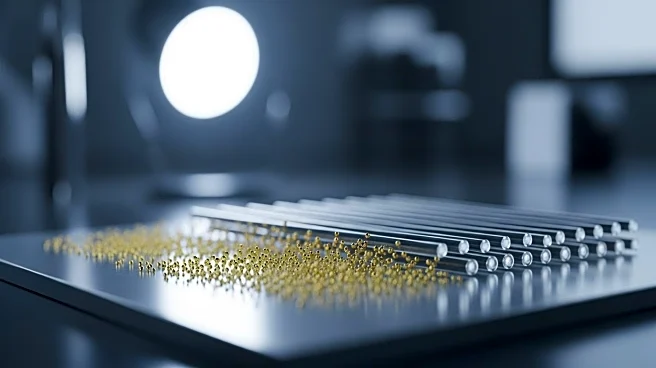What is the story about?
What's Happening?
Researchers have developed flexible tactile sensors using gold nanoparticles precipitated on carbon nanotubes, integrated into a 3D porous framework. This design offers low contact resistance and high sensitivity, making it suitable for various pressure-sensing applications. The sensors were fabricated using a scalable process, allowing for broad pressure detection ranges. The study evaluated different configurations of the sensors, demonstrating that the presence and concentration of gold nanoparticles significantly affect sensitivity and performance.
Why It's Important?
The development of these tactile sensors is crucial for advancing wearable technology and healthcare devices. Their high sensitivity and broad pressure detection range make them ideal for monitoring physiological signals and body movements. This innovation could lead to more accurate health monitoring systems, improving diagnostics and patient care. Additionally, the scalable fabrication process suggests potential for mass production, making these sensors accessible for various applications, including robotics and consumer electronics.
What's Next?
The next steps involve further testing and optimization of the sensors for specific applications, such as wearable health monitoring devices. Researchers may explore additional configurations and materials to enhance performance and reduce costs. Collaboration with industry partners could facilitate the integration of these sensors into commercial products, expanding their use in healthcare and technology sectors.
Beyond the Headlines
This development highlights the intersection of nanotechnology and healthcare, showcasing how advanced materials can improve sensor technology. The use of gold nanoparticles and carbon nanotubes represents a significant step forward in creating more efficient and sensitive devices, potentially leading to new standards in sensor design.
AI Generated Content
Do you find this article useful?













